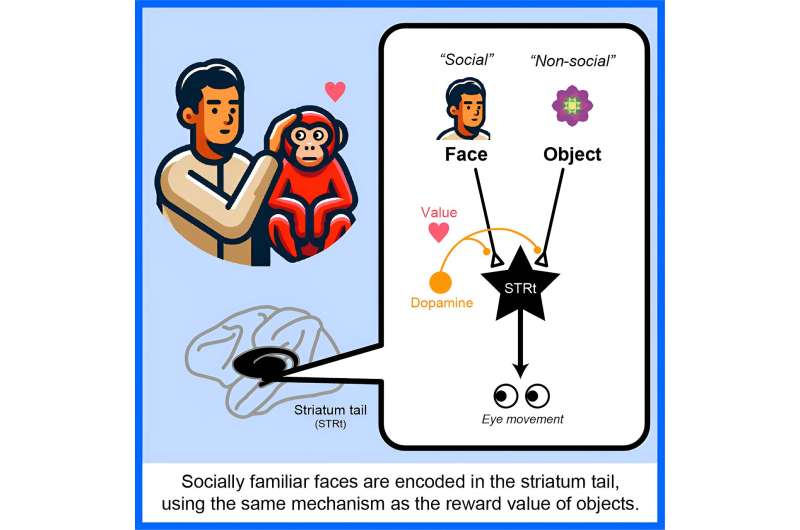This article has been reviewed according to Science X's editorial process and policies. Editors have highlighted the following attributes while ensuring the content's credibility:
fact-checked
peer-reviewed publication
trusted source
proofread
Researchers discover neural mechanism that encodes familiar faces

People experience a sense of familiarity from those who provide them with food and care on a daily basis. For children and pets, remembering the faces of such individuals is crucial for survival.
The basal ganglia, specifically the striatum tail, located in the deep region of the brain, plays a critical role in associating objects with their value through long-term experience. However, insight into how this mechanism operates in complex social situations, such as daily life, which is different from laboratory environments, remains unclear.
In this study, published in iScience, researchers from the University of Tsukuba presented monkeys with images of familiar and unfamiliar faces and recorded the neural activity from the tail part of the striatum. The neuronal mechanism used for storing the faces of familiar individuals in the brain was found to be the same as that used for remembering the value of objects.
The researchers showed the monkeys photographs of people who had cared for them daily for over a year as well as photographs of strangers, and recorded the neural activity from the tail part of the striatum.
The caudate nucleus responded strongly to familiar faces but weakly to unfamiliar ones. Moreover, the same neurons responded similarly to the varying values of objects. Considering that these neurons are also involved in rapid identification of valuable objects, they may be important in enabling children and pets to quickly identify familiar individuals.
These findings elucidate the mechanisms through which the brain forms and maintains social relationships. They are also useful in understanding and treating disorders caused by damage to the basal ganglia, including the tail part of the striatum, such as Parkinson's disease.
More information: Jun Kunimatsu et al, Neuronal response of the primate striatum tail to face of socially familiar persons, iScience (2024). DOI: 10.1016/j.isci.2024.110043



















